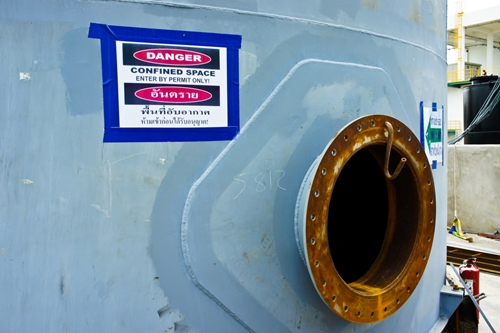
The Occupational Safety and Health Administration issued an update to its standard for construction work in confined spaces Aug. 3, 2015.
The standard requires employers protect workers from hazards in confined spaces – or work areas with limited means of entry and/or exit that are large enough for a worker to enter but not intended for regular or continuous occupancy. The updated standard addresses five key areas:
The controlling contractor
What changed: Instead of the host employer, the controlling contractor is now responsible for coordinating activities between multiple employees at the site.
The reason: This person often has a closer eye on the job site, and his or her coordination could prevent hazards related from work performed by other employees – such as carbon monoxide buildups – from entering or affecting confined spaces.
The competent person
What changed: General industry standards have allowed employers to evaluate their own job sites and identify confined spaces. The new standard makes clear this task should be done by a competent or qualified professional.
The reason: This addition increases clarity and workplace safety. OSHA defines a competent person as someone capable of identifying existing and predictable hazards, and who has the authority to enact prompt changes.
Atmospheric monitoring
What changed: Previous industry standards held periodic monitoring to be sufficient and never specified how often this should occur. Under the new standard, employers should monitor atmospheric conditions in confined spaces continuously, whenever possible.
The reason: While conditions at job sites vary greatly, it is possible for hazardous atmospheric conditions to develop within just a few moments. Setting a standard eliminates confusion and reduces risk to workers.
Engulfment hazards monitoring
What changed: The new standard requires employers to utilize early-warning systems that continuously monitor for engulfment hazards, such as flash flooding.
The reason: Early detection and warning gives workers more time to safely evacuate the confined space.
Suspension of permits
What changed: If an unacceptable condition – such as a power outage or flood – necessitates temporary evacuation and re-evaluation of the confined space, employers may suspend their entry permits, but will not have to cancel the permit or apply for a new one.
The reason: OSHA felt cancelling permits was unnecessary as long as the negative conditions were temporary and the area was reassessed and returned to the state specified by the permit.








